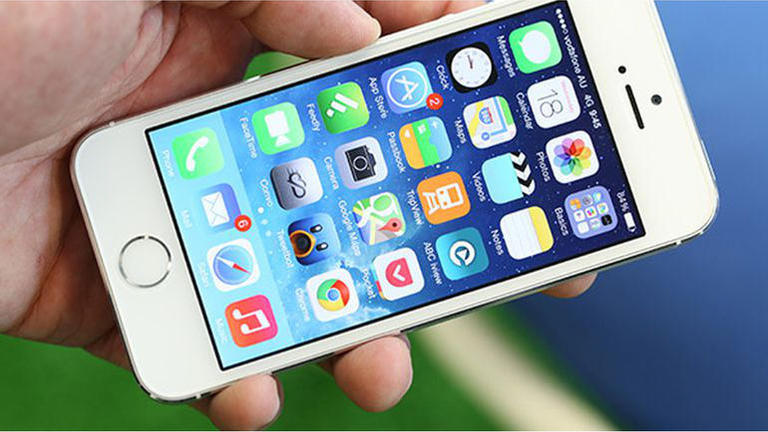As we live our lives on the go, mobile phones are becoming an extension of ourselves. Consequently, securing our mobile devices has become quite a necessity. You have to make sure that your shiny, precious data stays away from the prying eyes of cyber-Gollums.
On that note, we've listed some of the most common security threats that every iPhone user should have in mind.
Security threats for iPhone users
1. Smishing attacks
SMS phishing or smishing attack is similar to phishing, except, in this case, attackers trick people into revealing their sensitive data through SMS messages and phone calls. If you've ever received a message, 'Your package is on its way,' and you don't remember ordering anything, this is probably an attempt to lure you into giving away your personal information. What's more alarming, people are receiving texts and calls regarding their next COVID shot or similar pandemic-related information provided by someone posing as a governmental or healthcare organization. Therefore, don't respond to messages from unknown sources and don't click on any suspicious links.
2. Data breach through malicious apps
When installing an app from the Apple store, you probably glance over the permissions, click 'Agree,' and move on since it's a trusted source. Right? Well, next time, you should give it another look. Unprotected apps are an excellent opportunity for hackers looking for an easy way to access your data. Before installing, these kinds of apps will often ask for permission to access your gallery, phonebook, or other folders on your iPhone. Revealing your personal information to an untrusted party can result in identity theft and potentially fraudulent activities being done under your name.
3. Connecting to a public WiFi
Connecting to an unsecured WiFi can do more harm than good. One of the most common threats people are exposed to when connecting to a public WiFi is the 'Man in the middle attack,' where the third party interrupts the connection by posing as an actual participant. The hacker can steal the data in the transfer or send the malicious links to legitimate parties. A rule of thumb is to avoid public WiFi networks whenever possible because you can't know who (actually) set it up or who's monitoring it.
How users can secure their device
1. Use secure messaging and storage apps
Antivirusis not the only way to protect your phone. Moreover, iOS is exceptionally well designed to include various security apps depending on your security needs and preferences. If you want a better protected mobile device, start with securing your messages.
An excellent start is the Signal - a messenger app designed to encrypt all your conversations with other users. Also, Signal doesn't store your metadata - the only information they keep on their servers is the phone number you've used to register.
For those iPhone users who don't trust cloud services with their data, the Keeply app is an excellent storage option. It's a PIN-protected app that makes sure that all of your data stays on your device — a great place to store your photos and sensitive information like passwords.
2. Use a VPN
Even though cybercriminals will try to exploit every flaw in your security strategy, tech companies are doing a great job of staying two steps ahead in the game. Nevertheless, there's a limit on what they can do to protect your device. You should consider additional actions that will enhance security. A great start is to use an iPhone VPN. A VPN (Virtual Private Network) connects the device to a secure VPN server sheltering your traffic from possible intrusions. On top of that, a VPN is an excellent option if you want more privacy - you can browse the web and stay under the radar.
3. Adopt the 2FA
Two-factor authentication or 2FA is an added layer of protection for your device. Usually, it includes receiving an SMS with a code or a phone call.
To turn the 2FA authentication on your iPhone, you need to change the password and security settings in your Apple ID. Find the two-factor authenticationand turn it on. Furthermore, you'll have to add a phone number where you can receive a verification code. Ta-da! That's it. From now on, when you decide to log into your account, you'll have to enter your username and password, and then you'll have to enter the code that pops up on your screen.
3. Utilize built-in security features
Incorporating biometrics into the authentication strategy brought the revolution into Apple's security game. In addition to a passcode, iPhone users can protect their devices with TouchID or FaceID. Locking a device with your face or fingerprint makes it much more secure and easier to use since no one besides you can access your iPhone. In addition to that, you can use this feature to authorize your transactions and payments.
Another excellent built-in security feature is Find my iPhone. It can be helpful if you lose your phone or if someone steals it. All you need to do is mark your device as 'lost' and lock it with a passcode. This way, your data will stay safe until you find your iPhone.
Apple is putting much thought into its protective mechanisms, and we're curious to see what's next. Make sure to check your Apple account and turn on all available security features that you've potentially missed.

